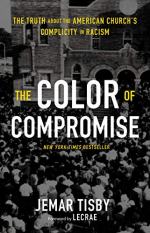
|
| Name: _________________________ | Period: ___________________ |
This test consists of 15 multiple choice questions and 5 short answer questions.
Multiple Choice Questions
1. Which of the following is NOT a social issue the Benevolent Empire sought to address?
(a) Poverty.
(b) Alcoholism.
(c) Abortion.
(d) Abolitionism.
2. Why was the antislavery clause removed from the Declaration of Independence?
(a) States that supported the slave trade won a Congressional vote.
(b) States that opposed the slave trade offended the Founding Fathers.
(c) States that profited from the slave trade objected to its inclusion.
(d) States that outlawed slavery launched a letter-writing campaign.
3. What year did the Sixteenth Street Baptist Church bombing occur?
(a) 1967.
(b) 1965.
(c) 1961.
(d) 1963.
4. When were the Articles of Confederation ratified?
(a) 1782.
(b) 1780.
(c) 1779.
(d) 1781.
5. Following the Sixteenth Street Baptist Church bombing, a white lawyer claimed that all white Christians bore some responsibility. What was this lawyer's name?
(a) Carolyn DuPont.
(b) George Whitefield.
(c) Billy Graham.
(d) Charles Morgan Jr.
6. According to Tisby, when did Christianity arrive in Africa?
(a) The 1st-2nd century.
(b) The 5th-6th century.
(c) The 3rd-4th century.
(d) The 7th-8th century.
7. What was the term for secret places where enslaved Blacks met to worship?
(a) Hush arbors.
(b) Confidential gardens.
(c) Quiet lanes.
(d) Hidden chambers.
8. How does Tisby perceive racism?
(a) As a historical myth.
(b) As an inevitability.
(c) As a social construct.
(d) As a mystery.
9. Which group received additional rights after the Revolutionary War?
(a) Black people.
(b) Native Americans.
(c) White women.
(d) White landowners.
10. How did Columbus view the native inhabitants of the Americas?
(a) As spiritual equals.
(b) As skilled laborers.
(c) As fellow citizens.
(d) As potential slaves.
11. During the early colonization of the Americas, which crop was most profitable?
(a) Potatoes.
(b) Tobacco.
(c) Corn.
(d) Wheat.
12. Which organization decided in the 1600s that baptism would not free enslaved people?
(a) The Virginia General Assembly.
(b) The Progressive National Baptist Convention.
(c) The United Daughters of the Confederacy.
(d) The Pentecostal Fellowship of North America.
13. Which revivalist preacher used profits from slave labor to build an orphanage?
(a) Solomon Stoddard.
(b) George Whitefield.
(c) Richard Allen.
(d) Jonathan Edwards.
14. What year did the Haitian Revolution take place?
(a) 1789.
(b) 1791.
(c) 1794.
(d) 1764.
15. Which Black preacher helped found the African Methodist Episcopal Church?
(a) Martin Luther King, Jr.
(b) Richard Allen.
(c) Jesse Jackson.
(d) Richard R. Jones.
Short Answer Questions
1. What was the name of the Black writer who published an autobiography in 1861, detailing her experiences as a enslaved girl?
2. Where did transatlantic ships carrying enslaved persons usually make port?
3. Which piece of legislation prohibited Black people from gathering without white supervision?
4. How did enslaved Blacks share messages about possible escape plans?
5. Which war allowed Britain to expand their territory in North America in the mid-1700s?
|
This section contains 445 words (approx. 2 pages at 300 words per page) |

|




